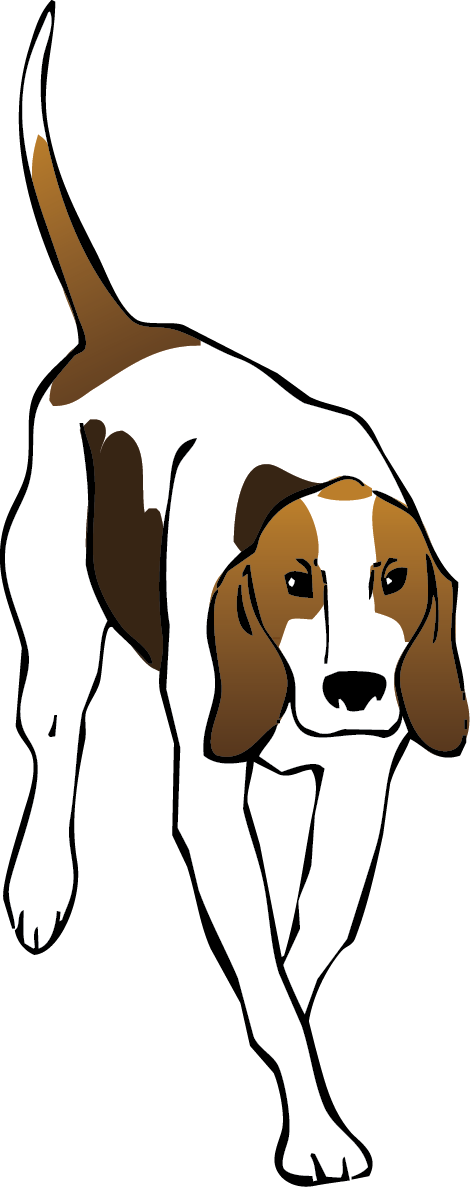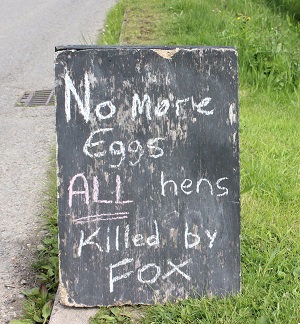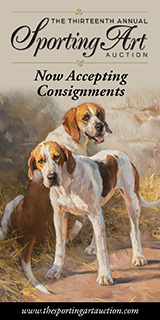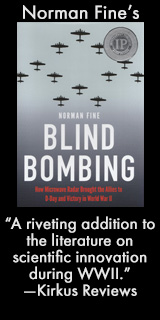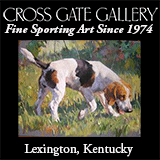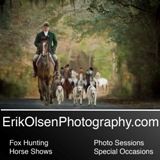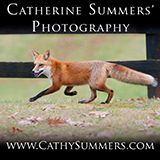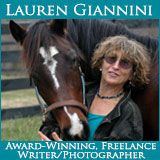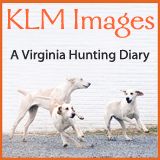Cottesmore foxhounds
James Barclay, MFH (1959−2021)
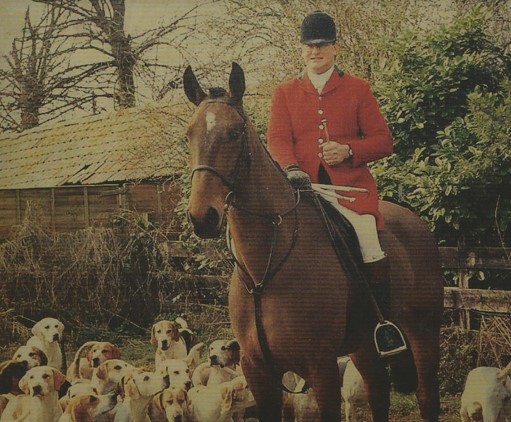 James Barclay, MFH, hunting the Fitzwilliam hounds, 1993
James Barclay, MFH, hunting the Fitzwilliam hounds, 1993
We are deeply saddened to report the passing of Maurice James Barclay, ex-MFH, at age sixty-two. His death is attributed to heart failure.
After serving as Master of five British foxhound packs, his response to Britain’s Hunting Act of 2004 was to devote himself to educating and persuading everyone he could reach―whether pro-hunting or anti-hunting, adult or child, wealthy countryman or underprivileged child of the city―of foxhunting’s intrinsic value to England’s story-book countryside. To James, nothing was more important than saving the countryside.
Close Encounters with My Vulpine Friends
James Barclay was born to foxhunting. He, his sister, two brothers, mother, father, grandfather, and great-grandfather all served as Masters of Foxhounds—a family way of life that began in 1896. James served as Master of five hunts from 1983 to 2012: the Essex and Suffolk, Fitzwilliam, Cottesmore, South Wold, and Grove and Rufford. Click for a fuller introduction to James Barclay in Norm Fine’s Blog.
With over two hundred years involvement with various packs and types of hounds under our belt, you will understand it was and always will be the number one rule in the Barclay family to have the greatest respect for our quarry species, be it the fox, deer, or hare. The pleasure they give us is immense, and this comes from not only close observation on a hunting day but during the summer months when they are all, in their own distinctive ways, equally fascinating.
It is the fox, however, that has taken up a very large part of my life, and hardly a day passes when he doesn’t enter my mind in one way or another. And more than likely he will be discussed at some point, especially when he is being blamed for eating someone’s prime poultry! Whenever foxes are talked about, however, it is generally with a large degree of affection, except of course on the day a heinous crime has been committed in his role as the ruthless killer!
My pleasure in writing this has come from looking back and remembering moments when my vulpine friends have behaved in ways that remain etched on my mind. In the past, I have recollected their somewhat strange habits after the death of a particularly well-loved character. This enters another realm, although there are places where both realms meet and it is then when it really does become all the more fascinating!
Chris Howells and His Hounds
One day some years ago while recuperating from whatever had me grounded at the moment, I decided to follow my home pack, the Blue Ridge foxhounds, by vehicle. Fortunately, Chris Howells had an open seat, so I climbed into his blue pickup truck.
I knew that whatever would be seen of the action that day from any vehicle would be seen from Chris’s truck first. Every road follower wants to ride with Chris. If there’s no room, they do their best to follow him. Chris knows the country and how the foxes run.
Chris hunted the Blue Ridge foxhounds from 1973 to 2001 during the Mastership of Judy Greenhalgh. Since his retirement from the saddle, Chris has been following hounds on the roads for another almost twenty years. He serves as the principal road whip and remains a valued and knowledgeable member of the staff.
The following article was first published in the November 1983 edition of "Horseplay" magazine. –Ed.
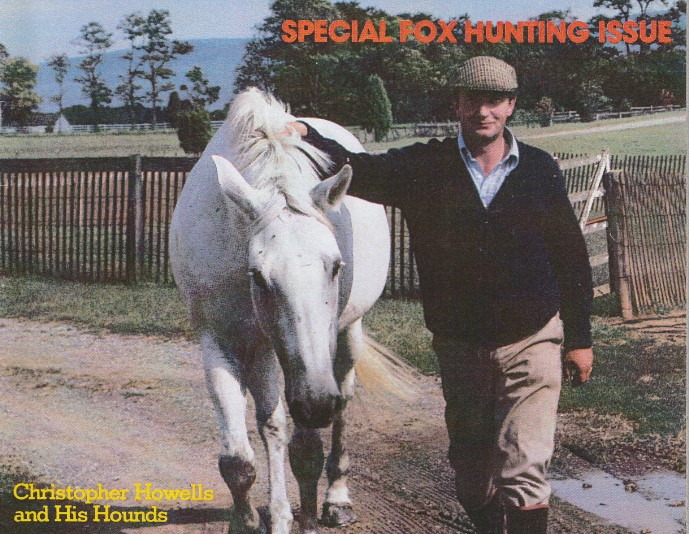
The early morning light shows a solitary figure on his way to the kennels, a terrier at his heels and a can of Pepsi in his hand. Christopher P. Howells, huntsman for the Blue Ridge Hunt in Boyce, Virginia, is about to start another busy day. Hounds greet him with an enthusiastic din, but turn quiet as he speaks to them in his soft English accent and sees to the feeding.
Midland Striker Is Grand Champion at Virginia
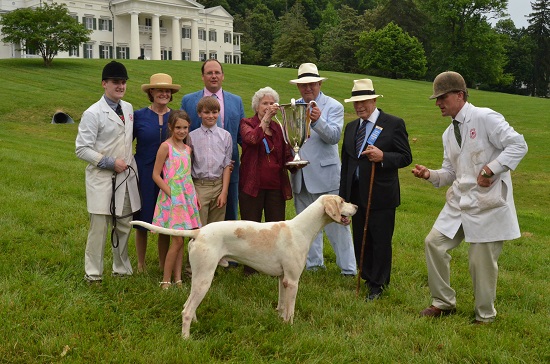 Midland Striker 2015 captures the William W. Brainard, Jr. Perpetual Cup on the lawn in front of the Morven Park mansion. Midland huntsman Ken George holds Striker's attention as three generations of Lamptons and Hardaways gather to accept the trophy from Virginia Foxhound Club President Joan Jones. Dr. John W.D. McDonald, MFH (lapel ribbon) judged this final class of the day. / Nancy Kleck photo
Midland Striker 2015 captures the William W. Brainard, Jr. Perpetual Cup on the lawn in front of the Morven Park mansion. Midland huntsman Ken George holds Striker's attention as three generations of Lamptons and Hardaways gather to accept the trophy from Virginia Foxhound Club President Joan Jones. Dr. John W.D. McDonald, MFH (lapel ribbon) judged this final class of the day. / Nancy Kleck photo
With six hundred foxhounds from thirty-seven hunts showing in five separate rings at the Virginia Foxhound Show at Morven Park on Sunday, May 29, 2016, the hour gets late before the four individual division champions—American, Crossbred, English, and Penn-Marydel foxhounds—finally get their chance to face off for the William W. Brainard Jr. Perpetual Cup designating the Grand Champion of Show.
The hour arrived, somewhere around six p.m., as four handsome champions came together before Dr. John W.D. McDonald, MFH, judge of this prestigious class. It had been a long, hot, and tiring day for everyone—spectators, judges, handlers, and hounds alike. But one foxhound looked like he was still ready and happy to run from one end of the field to the other, which he did when asked to show his movement. With long, powerful, yet graceful strides that looked like a slow-motion camera had been set up just for him, Midland Striker made his statement and would not be denied.
“He is one of the most beautiful movers anyone could expect to see,” said Judge McDonald in admiration. “And he has perfect conformation.”
A Sporting Tour Through Merry Old….Part 2
Join James Barclay---an ex-Master of five English foxhunts---for Part 2 of his personal and revealing tour of elite hunting establishments through Middle and Eastern England. Barclay went out with twenty-one packs in just two months during the informal season, the last of which on the morning before the first of six Opening Meets. Click for Part 1.
Fitzwilliam huntsman George Adams and hounds with birdman John Mees at the kennel meet, Milton Park / James Barclay photo
Fitzwilliam
Hunting with the Fitzwilliam is always a treat, especially as my family and I spent twelve very happy seasons there. Although Peterborough is on the doorstep, the Park is beautifully laid out for hunting and many good days are enjoyed there. The kennels are situated on the eastern side of the Park and have a history going well back into the 1700s.
The combination of these hounds hunting with an eagle---[The Hunting Act allows a pack of hounds to flush a fox to a bird of prey]---in close proximity to the action is something we are seeing in all but a few places now and is very much a sign of the times. George Adams has hunted these hounds for over thirty years and is certainly one of the most popular men in his profession. This particular morning was when one realises just how lucky we are. On our side of the Park wall was a great gathering of like-minded people enjoying something that has taken place here for generations. On the other side is four miles plus of new houses, factories, roads and the roar of urban noise. Is it therefore, not up to us—those who love our countryside and its activities—to encourage and involve those who may never have come across us before? Our worlds may be far apart in one sense, but they are not in another. There may be just a wall between us in this case, but it should never be looked upon us as a barrier.
The Galway Blazers at Craughwell
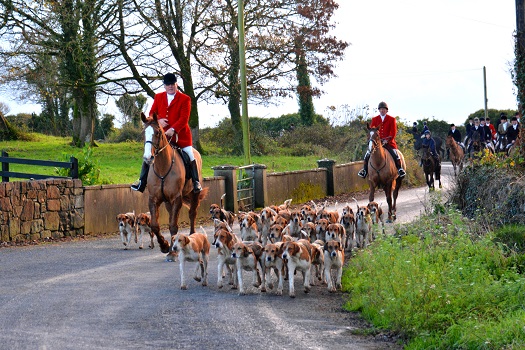 Galway Blazers huntsman Tom Dempsey and whipper-in Anthony Costello hack home after a cracking day's hunting in Craughwell. / Noel Mullins photo
Galway Blazers huntsman Tom Dempsey and whipper-in Anthony Costello hack home after a cracking day's hunting in Craughwell. / Noel Mullins photo
The County Galway Foxhounds (the Blazers), hunted by Tom Dempsey, had a brilliant day's hunting at Craughwell, finding five foxes and running each one to ground.
The hunt was formed in the early nineteenth century and hunts about thirty square miles of unique limestone wall country. The first Master and huntsman was John Denis, an ancestor of the late Lady Molly Cusack-Smith, MFH, who, neé Molly O’Rourke, hunted the Blazers during World War II. There were many other well known Masters, including Isaac (Ikey) Bell, father of the modern English foxhound; American film director John Huston; and Captain Brian Fanshawe, one of England’s illustrious Masters (Warwickshire, North Cotswold, and Cottesmore) and renowned breeder of foxhounds. Two Field Masters that held office for long periods were Lady Anne Hemphill and Willie Leahy.
The Galway Blazers have some of the very best hunting country in the world. To say it is unique is an understatement, with miles of small enclosures, resulting in often fifty stone walls to the mile and uninterrupted views of hounds hunting. To hunt even once with the Galway Blazers is on most hunt followers’ bucket list.
See You at Second Horses
See You at Second Horses, Barclay Rives, Aterlerix Press, New York, 2014, Paperback, illustrated, 184 pages, $13.50, available at retail outlets including Horse Country Saddlery, Warrenton, VirginiaThe foxes! Oh, the foxes! When Barclay Rives undertook a marathon of foxhunting in 1999, when he went out with nine English hunts in ten days, it seemed like there was a fox popping out of every covert.
Rives, an honorary whipper-in for the Keswick and Bull Run Hunts (VA), writes about his English sporting adventure in See You at Second Horses, a delightful read that puts us galloping behind some great packs in the glory days before the infamous Hunting Act of 2004 banned hunting with hounds in the traditional manner in England and Wales.
Rives is an avid hunter who once hunted one hundred days a season, sometimes going out with Keswick in the morning and Bull Run in the afternoon. Saying he was gung-ho is an understatement. He jumped at the chance to join his friends Grosvenor and Rosie Merle-Smith to hunt with packs dating back to the 1700s: the Quorn (twice), the Cottesmore, the Fernie, and others, including a foot pack—the High Peak Harriers—after rabbits.
New Foxhunting Website Launched in England
James Barclay, ex-MFH, whose elegant prose has appeared (and will continue to appear) in Foxhunting Life, has launched a new subscription website titled, “For the Love of Hunting England. The new portal promises to be full of news, information, and features about hunting in Great Britain and further afield. James, whose family has been deeply involved in foxhunting for many generations and who has been a Master of several packs of hounds, including the Cottesmore, Fitzwilliam, Grove and Rufford, and Essex and Suffolk, said, “I hope that this new website will be of interest to hunting people all over the world, but I decided to call it For the Love of Hunting England because it is in Old England that the sport as we know it has its roots.” The site will be a portal for James’ passion for and knowledge of hounds across Britain, and the breadth of his interest in hunting and the personalities involved. The annual subscription fee will be £15. A special price of £12.99 is available for subscriptions purchased before Christmas. Visit the website for more information. Posted September 1, 2013
Read More
Introducing James Barclay, ex-MFH
 A young James Barclay while Master of the Fitzwilliam Foxhounds (UK)Allow me to introduce James Barclay, a retired Master of Foxhounds in England and descendant of a distinguished foxhunting family. I am pleased and honored to announce that Foxhunting Life will be publishing James’s informative and thoughtful essays in future issues.
A young James Barclay while Master of the Fitzwilliam Foxhounds (UK)Allow me to introduce James Barclay, a retired Master of Foxhounds in England and descendant of a distinguished foxhunting family. I am pleased and honored to announce that Foxhunting Life will be publishing James’s informative and thoughtful essays in future issues.
James’s family roots are with the Puckeridge Foxhounds, a hunt in Hertfordshire dating back to 1725. His sister has served as Master since 1987. Two brothers, his mother, father, grandfather, and great-grandfather also served as Masters of the Puckeridge, that dynasty starting in 1896.
James’s first day of hunting was with the Puckeridge back in the 1960s. He was astride a donkey, and, by tradition, he wore a small version of the family scarlet coat which each family member going back at least three generations had worn on their first hunt!
